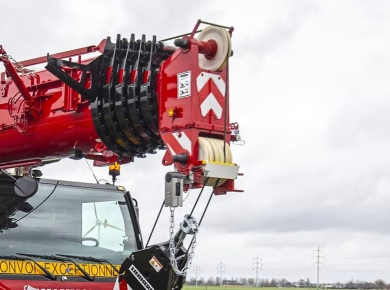Roof repair in Miami can often feel like a daunting task for homeowners. With the tropical climate, heavy rains, and the occasional hurricane, roofs face unique challenges that can lead to leaks and other issues. Understanding the inspection protocol that predicts where leaks will develop is essential for maintaining the integrity of your home. In this article, we will explore the intricacies of roof inspections, what to look for, and how to effectively address potential problems before they escalate.
The Importance of Regular Roof Inspections
Many homeowners underestimate the significance of regular roof inspections. Over time, wear and tear can occur due to exposure to the sun, rain, wind, and even debris. These factors contribute to the gradual deterioration of roofing materials, which can lead to leaks and structural damage if left unchecked. By scheduling regular inspections, you can identify issues early, saving you money and hassle in the long run.
Regular inspections allow homeowners to address minor issues before they develop into major problems. For instance, a small crack in a shingle may seem inconsequential, but it can lead to significant water damage if not repaired promptly. Additionally, regular inspections can provide peace of mind, knowing that your roof is in good condition and capable of withstanding Miami’s unpredictable weather.
Understanding Common Roof Leak Causes
To effectively predict where leaks may develop, it’s crucial to understand the common causes of roof leaks. Miami’s climate introduces specific stressors that can affect roofing systems:
Age of the Roof
As roofs age, materials naturally degrade. Shingles may become brittle, and flashing could corrode. This deterioration can create vulnerable areas where water can infiltrate. If your roof is approaching the end of its expected lifespan, it’s time to be vigilant and schedule an inspection.
Improper Installation
Sometimes, the root of roofing problems lies in installation errors. If a roof was not installed correctly, it may not perform as expected. Poorly aligned shingles, inadequate sealing, or insufficient underlayment can all lead to leaks. Homeowners should ensure that qualified professionals perform roof installations and repairs.
Debris Accumulation
In Miami, falling branches, leaves, and other debris can accumulate on roofs, especially in the rainy season. This accumulation can trap moisture, leading to mold growth, rot, and leaks. Regularly clearing debris and ensuring proper drainage can help mitigate this risk.
Flashing Issues
Flashing is the material used to direct water away from critical areas of the roof, such as chimneys, vents, and valleys. If flashing becomes damaged, water can seep into the underlying structures. Inspecting flashing during roof inspections is vital to ensure its integrity.
The Roof Inspection Protocol
Now that we’ve discussed the importance of inspections and the common causes of leaks, let’s delve into the inspection protocol itself. A thorough roof inspection involves several key steps to ensure that all potential leak sources are addressed.
Visual Inspection
The first step in a roof inspection is a visual assessment. This involves looking for obvious signs of damage, such as cracked or missing shingles, rusted flashing, and sagging areas. It’s essential to check not only the roof surface but also the gutters and downspouts to ensure they are clear and functioning correctly.
During the visual inspection, take note of any areas that may require further investigation. For instance, if you spot a discolored patch on the ceiling indoors, it could indicate a leak that needs to be traced back to its source.
Assessing the Roof’s Structure
Next, it’s important to assess the structural integrity of the roof. This involves checking for sagging or uneven surfaces, which can indicate underlying issues. If the roof deck is compromised, it may not effectively support the roofing materials, leading to potential leaks.
Additionally, inspect the attic space. Look for signs of water intrusion, such as stained wood, mold growth, or damp insulation. These indicators can provide valuable information about the roof’s condition and highlight areas that need immediate attention.
Checking Seals and Flashing
As mentioned earlier, seals and flashing play a crucial role in preventing leaks. During the inspection, ensure that all seals around vents, chimneys, and skylights are intact. Any signs of cracking or peeling should be addressed promptly.
Flashing should also be checked for rust or damage. If any flashing appears compromised, it may need to be repaired or replaced to ensure a watertight seal. This step is particularly important in a climate like Miami’s, where heavy rains can quickly lead to water intrusion.
Evaluating Drainage Systems
Effective drainage is vital for preventing leaks. Clogged gutters and downspouts can lead to water pooling on the roof, increasing the risk of leaks. During the inspection, ensure that all drainage systems are clear and functioning correctly. If you notice any blockages, they should be addressed immediately.
Additionally, check the slope of the roof. A roof that is not adequately sloped can lead to water pooling, which can cause leaks over time. If you have concerns about your roof’s drainage capabilities, consider consulting a professional.
Implementing Preventative Measures
Once your roof has been inspected, it’s essential to implement preventative measures to protect it from future leaks. Here are some actionable steps homeowners can take:
Schedule Regular Inspections
As we’ve discussed, regular roof inspections are vital for identifying potential issues early. Consider scheduling inspections at least once a year, preferably before the rainy season. This proactive approach can help catch problems before they escalate.
Invest in Quality Materials
When it comes to roof repairs, using high-quality materials is crucial. Cheaper materials may save you money upfront, but they can lead to more significant issues down the line. Investing in quality shingles, flashing, and sealants can provide long-lasting protection against leaks.
Maintain Your Roof
Regular maintenance is key to prolonging the life of your roof. This includes cleaning gutters, removing debris, and inspecting seals and flashing. Taking these steps can help prevent water intrusion and ensure your roof remains in optimal condition.
Know When to Replace
Sometimes, a roof may be beyond repair. If your roof is significantly aged or has multiple issues, it may be more cost-effective to replace it entirely. Consult a roofing professional to evaluate your options and determine the best course of action.
Conclusion: Protecting Your Home with Knowledge
Roof repair in Miami is a critical aspect of maintaining your home’s integrity. By understanding the inspection protocol that predicts where leaks will develop, you empower yourself to take action before minor issues spiral into major headaches. Regular inspections, awareness of common leak causes, and proactive maintenance are essential components of effective roof management.
In a city like Miami, where the weather can be unpredictable, being informed and prepared is your best defense. Taking the time to understand your roof and its needs not only protects your investment but also ensures that your home remains a safe haven for you and your family. So, as you look up at your roof, remember that it’s not just a structure over your head; it’s an essential barrier between your home and the elements. Be diligent, stay proactive, and keep your roof in peak condition.


